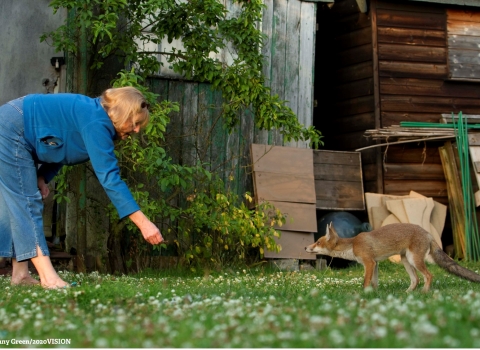Wildlife advice / FAQ's
Seeing wildlife can be incredible, but it can be hard to know what to do in certain situations. Maybe you have discovered an injured or dead animal, or maybe you suspect that a crime has been committed. We are asked lots of questions about wildlife, but some crop up regularly. Below, are some of the queries that we are asked most frequently. Our wildlife advice pages will help you know what to do and who to contact if you do find yourself in certain situations.
Injured wildlife
The Trust does not have a wildlife rescue service. If you find a sick or injured animal, please visit the Help Wildlife website (link below) to find the nearest organisation which may be able to help or offer advice. Please note that by linking to this page Staffordshire Wildlife Trust does not endorse any of the organisations listed, which are entirely separate to the Trust.
https://helpwildlife.co.uk/map/
The RSPCA (0300 1234 999) and Help Wildlife's pages carry more detailed advice on what to do with injured birds and other wildlife.
Wildlife crime
If you witness a wildlife crime taking place, call 999. For a non-emergency, call 101. If you would like to give information regarding a crime anonymously, call Crimestoppers on 0800 555 111.
FAQ's
I've found a baby bird that has fallen from its nest - what shall I do?
It is normal for fledglings (feathered young birds) to spend a day or two on the ground as their flight feathers grow fully. The parents are likely to be around nearby keeping an eye on their offspring or temporarily absent looking for food. The best thing to do is leave the young bird where it is - it is unlikely it will have been abandoned.
If the bird is in danger, for example near a road, pick it up and move it a short distance to a safer place, so the parents will still be able to find it. If it is in danger from a domestic pet, such as a cat, keep the pet indoors until the fledgling is airborne.
If the young bird is unfeathered, or covered in down, it may have fallen from the nest by accident. If it appears strong and healthy, you can return it to the nest. If it is not healthy or is injured, it may have been ejected from the nest by its parents. In this case, it is best to contact a wildlife rescue centre (see the list of numbers in 'I've found a sick or injured animal' FAQ).
What are the best plants to grow in your garden to attract bees/butterflies?
Check out The Wildlife Trusts advice for attracting butterflies and bumblebees to our garden.
My pond is overcrowded with frogspawn - shall I get rid of it?
Sometimes ponds can seem overcrowded with clumps of spawn, or heaving masses of tadpoles. Don’t worry! This is completely natural. It’s the frogs’ way of coping with the fact that large numbers of tadpoles and young frogs die. A female may produce 2,000 eggs (female toads tend to produce about 1,000) and of these only four or five are likely to make it to old age, which in frog terms is probably about four years old. The rest will make up an important part of the diet of a wide range of wildlife including herons, fish, beetle larvae and blackbirds. This high death rate is distressing but totally natural, and it means that you will not be knee-deep in frogs when they all develop.
Do not take spawn to another pond or remove it to the wild. Doing so will only create a vacant niche which may encourage more spawning. Besides, moving frogs to new ponds risks spreading an unpleasant frog disease, red leg, which is now afflicting our frog population. The best thing is to leave the spawn where it is and let nature take its course.
I've find an interesting plant or animal and I want some help in identifying what it is.
Send full details and a high quality photo to Stafford Ecological Record which is based here at the Trust - we may be able to help. However, we get lots of requests so it may take a while - please be patient.
Another option is to join the I Spot community which is run by the Open University. It's a website where, once you have signed up, you can upload your image and someone will get back to you with their thoughts on what it is.

